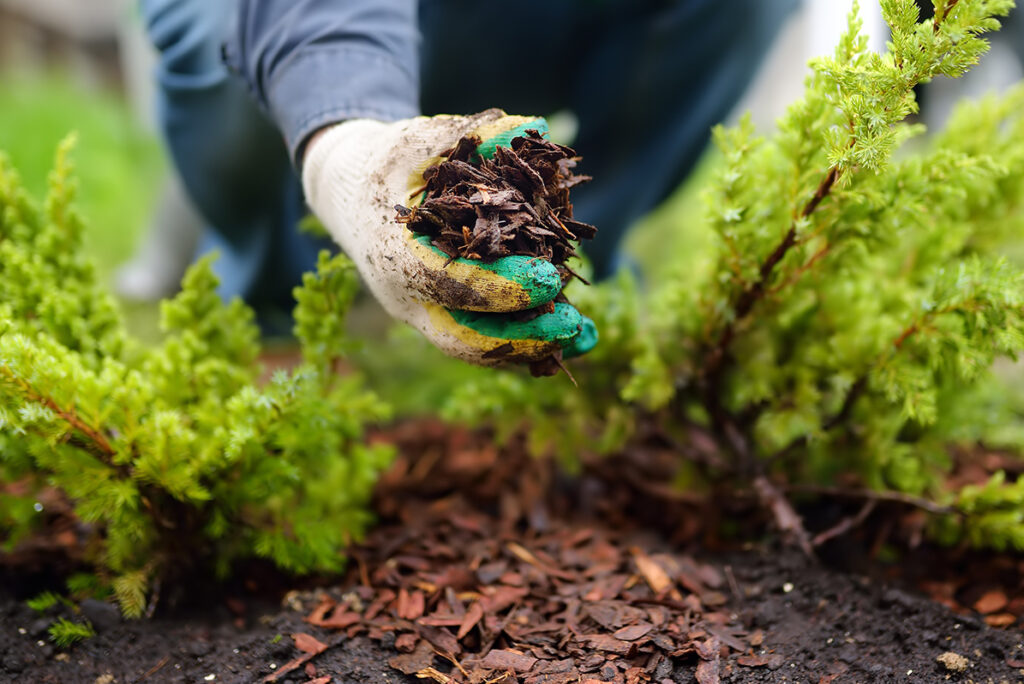Mulching
Mulch is a substance used to cover the soil surface around trees and shrubs. Mulching is applying a layer of material to the soil between plants. In the summer, it keeps roots and bulbs cold, and it keeps them warm in the winter. In some circumstances, such as on a hillside, it also aids in soil erosion prevention. Mulch acts as a slow-release fertilizer, which comes in handy when raking leaves from the ground in Autumn.

Mulching trees keeps weeds at bay, reducing water competition and the number of interactions with machinery that could damage the trunk. It also has other advantages, such as lowering soil temperatures, reducing soil compaction, shielding plants from lawnmowers and weed trimmers, all while improving attractiveness.
Mulching trees and bushes are beneficial for a variety of reasons. Apply mulch to a large portion of the root zone area to help the plant’s root system grow faster. Apply mulch over a broad enough area to form a safety zone around the plant to protect it from equipment harm.
Types Of Mulch:
1. Organic Mulch
Organic mulches decompose over time and are only used for a short time. The usefulness of an organic mulch is determined by how it decomposes and reacts to rain and dew.
Examples Include:
- Bark
- Wood chips and sawdust
- Compost
2. Inorganic Mulch
Examples Include:
- Gravel, stone, and lava rock
- Landscape fabrics
